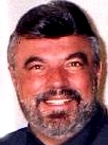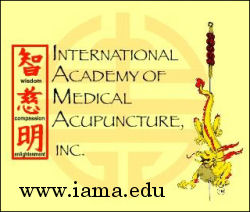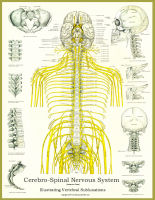Acupuncture & TCM Articles

Acupuncture Articles
by John A. Amaro L.Ac., Dipl.Ac.(NCCAOM), DC
 Dr. Amaro is an internationally known author, lecturer and practitioner beginning his practice of Acupuncture and Chiropractic in 1971. He has led 13 diplomatic Acupuncture study tours of The People's Republic of China escorting more than 500 doctors and practitioners. He has personally studied Acupuncture in nine separate Asian nations. Dr. Amaro is an internationally known author, lecturer and practitioner beginning his practice of Acupuncture and Chiropractic in 1971. He has led 13 diplomatic Acupuncture study tours of The People's Republic of China escorting more than 500 doctors and practitioners. He has personally studied Acupuncture in nine separate Asian nations.
He has received Certification in Acupuncture through the Columbia Institute of Chiropractic in 1973. This was one of the first Acupuncture postgraduate education programs for physicians in North America commencing in 1972.
He has been certified by the Waseda Acupuncture College in Tokyo, Japan in 1974 and graduated from the Chinese Medical Institute, Kowloon, China in 1976. He had previously taken postgraduate studies at the Tai Chung Medical School Taipei, China 1973.
The Atlas Vertebrae and Acupuncture
John A. Amaro L.Ac., Dipl.Ac.(NCCAOM), DC
On my first official trip to China in 1973, I was fortunate to have attended lectures in acupuncture at the Tai Chung Medical College in Taipei. While there, an illustration caught my eye. The original had been an etching on the breast plate of a tortoise shell from 3,500 years ago. It showed an ancient physician delivering what appears to be an upper cervical chiropractic type of adjustment.
My professors in China confirmed my observation and elaborated on the very important role of the atlas (C1) vertebrae in a vast variety of health conditions, especially as it relates to acupuncture. This was extremely exciting to me. Suddenly I was aware of a new-found parallel to chiropractic I had not expected to find when I visited to study acupuncture.
The developer of the chiropractic profession, Dr. B.J. Palmer, is credited with developing a specific technique in 1924, which was known as "Hole in One" (HOI). It is used by thousands of DCs, with absolutely magnificent clinical response in virtually every known health condition. It is a procedure where only the occiput and top two vertebrae (C1 Atlas, C2 Axis) of the cervical spine are adjusted. No other vertebrae are adjusted or stimulated other than these two. It is still used to this day by many within the profession even though the profession at large has developed a variety of techniques and procedures over the decades which are seemingly more popular to include instrument assisted adjustments. There have been several different internationally accepted procedures based upon the adjustment of the Atlas vertebrae, most notably the Grostic technique. Palmer specifically stated the primary causative vertebrae to subluxate (move from normal position) can only exist at the occiput, C1 and C2. He was a strong advocate of HIO until his death in 1961.
Even though my personal chiropractic background has been as a full-spine practitioner, I have placed great emphasis upon the articulation of the atlas and axis vertebrae as a treatment of disease. Not only did I receive the neurological and anatomical explanations of the dynamic role of the atlas/axis articulation through my studies while in college, I had been introduced to its extreme importance while studying acupuncture in China.
When one looks at the zang fu organs, one will see the magnificence of the atlas/axis area. Every organ associated with the meridians, namely Lung, Large Intestine, Stomach, Spleen, Heart, Small Intestine, Kidney, Pericardium, Triple Heater (endocrine system), Gallbladder and Liver, all have a direct or indirect neurological connection from the C1 (atlas) vertebrae with the exception of the Bladder. However one of the most significant points on the human body, BL10 is located directly over the atlas vertebrae and is where the Bladder meridian splits to form two distinct channels paravertebral down the spine to include the famous shu (associated) points. Therefore, all organ systems associated with the meridians are intimately related to the atlas vertebrae to include the Bladder due to this neurological connection.
Given the fact the foramen magnum (the opening at the base of the skull allowing the spinal cord to flow from the brain) can become partially occluded due to subluxation of the atlas vertebrae, which protects this area, it becomes obvious that this area is paramount for nerve flow through the body. Any disruption can cause extreme symptomatology and condition response. This is true for any neurological, visceral or musculoskeletal condition.
Four years of chiropractic college had given me a stellar education regarding the neurophysiology of the body and in particular the role of the spinal vertebral segments and its role in the expression of neurological impulse to the entire body. However, it was my early study of acupuncture which really put it all together for me. Not only did I understand more fully the role of the Huo Tuo Jiaji points as they relate to the sympathetic nervous system but in particular, the vital role of the atlas/axis articulation as described by Palmer and others.
Spinal Nerves and
Subluxations Poster

To this day in my own clinical practice, I still utilize an approach to healing I learned nearly 40 years ago. Any time a practitioner will stimulate with acupuncture needles in and around the atlas/axis/occiput, this favorable response can be confirmed. Teishein (non-invasive needle), electronic stimulation and laser are especially effective. The points I specifically refer to are: GB20 (just under the occiput halfway between the tip of the ear and the external occipital protuberance, which is specifically connected to the acupoint GV (DU 16). BL10 half way between GV 16 and GB20. TH16 at the extreme lateral transverse process of the C2 (axis) vertebrae. I always add ST7 on the mandible due to its inner connection to the atlas, in addition to KI27, which will likewise have a related effect. GV 15, just below the axis (second cervical, in addition to GV14 just below the C7 vertebrae will elicit one of the most powerful effects you will ever see in acupuncture.
Begin adding this extremely important protocol into your practice in addition to general stimulation of the HuoTuo Jiaji points (one-half inch bilateral to DU MO), and you will have a combination of points that may be the most dynamic you will ever use in clinical practice for virtually every condition you will encounter. Should you wish a copy of an illustration of these points, drop me an e-mail asking for this specific graphic. Give me a report of your successes!
|
